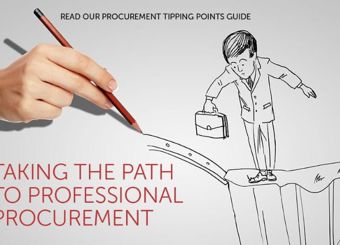Dynamic discounting: maximizing supplier savings
According to a recent QuickBooks survey, 65% of mid-size businesses polled noted that they spent 14 hours a week - nearly two full work days - chasing late payments. And our own research indicates that damage to supplier relationships caused by late payments is costing businesses 24% in lost orders.
Many large organizations now use long settlement terms to improve their working capital positions, extending payable outstanding limits to up to 120 days in some cases. While extending payment terms is good for liquidity in large corporations, it increases financial pressure on the supply chain, especially in smaller businesses.
What is dynamic discounting?
Dynamic discounting is a process designed to improve supplier performance management, minimize worrying late payments trends and create benefits across the supply chain. It offers both the supplier and the customer a financial upside; the buyer pays earlier and, in exchange, the seller offers scaled savings based on how quickly the payment is made.
At Medius, we’ve seen this first hand. Our procurement Innovation Pathway research has revealed that 27% of procurement professionals already use dynamic discounting with selected suppliers, 30% plan to start doing so in the next 12 months, and 20% highlighted it as a long term objective for the future.
- Scale – agreeing which suppliers are in and which are out. Is it best to go with a big bang or a phased approach based on size of spend? Usually it comes down to the resources required to administer a scheme versus the savings the buyer can expect in return.
- Strategy – some buying organizations use dynamic discounting as a tool to extend payment terms to those suppliers who decide not to participate. Procurement teams need to have a clear policy for any scheme, so suppliers know the options available to them.
- Cashflow – financially, you need to consider how well your organization is placed to speed up invoice payments. Consult with your finance team and present a business case to show how the longer-term cost benefits of dynamic discounting can outweigh the inevitable initial pressure on cash flow.
From a practical point of view, in order for any organization to be able to take advantage of dynamic discounting, it will need to have effective processes and systems in place to ensure that invoices can be paid promptly. This means clear management of supplier performance, from the point of purchase by the employee through to accounts payable being given the green light to make payment. Purchase to Pay systems do exactly this job for thousands of businesses worldwide, and you can read about some of our own customer success stories here.





